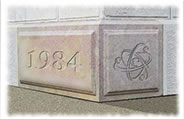The Bridge from Is to Ought
“Leadership isn’t about knowing everything or doing everything. It’s about seeing. The leader has a very special skill set; first the ability to see things as they really are — including their own skills and limitations. And at the same time, the ability to see (envision) the future as it ought to be. The most successful leaders can and must “broker” back and forth between IS and OUGHT without getting stuck in EITHER.
The distance between Visionary Leader and Obsessive Critic is measured in microns…”
—J. R. St. John
How It IS:
Obviously, a lot of critical leaders get their shot because they can see (and point out) the flaws in the operations. Those who can identify what isn’t working have a huge contribution to make in improving the firm. We need to work on some things. But not on everything and not all at once. The really difficult judgment call is: “Which things do we take on now, which do we do soon, and which do we do later?” If someone can’t stop criticizing, they are no leader and need to be muzzled!
How It Ought to Be:
Seeing it as a perfect picture — everything working perfectly and glowing — is the gift of a few special people. Such leaders can inspire us to reach higher, try harder and stay longer in search of Continuous Professional Improvement. Serving inspirational leaders is an honor, a privilege, and sometimes a burden — nothing weighs so heavy as a perfect vision…
Seeing a perfect future can be a real danger, because a lot of people, resources and credibility can get caught up in the attempt to optimize beyond our real immediate capabilities. Of course, we have to reach beyond our immediate grasp in order to leave a meaningful mark, but not if we cave in too many people, spend more than we can reasonably invest and overturn too many accepted standards.
How many working, productive organizations have been upended because a young turk with big ideas started agitating the board and talking about hugely expanding the profit pool? It’s a siren song: “Improvement!” And yet, many big ideas turn out to be unworkable, unprofitable, even deadly, because they steal attention and resources from the day-to-day small-bore improvements that take a firm up — but not too far…
The Confidence: to Start and Stop
You must be confident in your ability, or you won’t even start. Yet overconfidence (EGO!) is probably the single largest backstory in executive failures. The perks and the false praise can become intoxicating. Wearing the badges of rank can be a distraction. Those badges get everyone’s attention — because the people wearing them are expected to be wiser, better and deeper than mere mortals. Catching sight of yourself in that sharp suit with the killer watch, reflected in the admiring gaze of a young lieutenant can disrupt your balance and obscure the day’s objective.
Imagine the more perfect CEO: Elegant, seductive and unaffected. Wearing the sexy uniform, yet unmoved by it. Leading a meeting and rallying the team with a great presentation, then taking everyone to the local soup kitchen to volunteer. Confidence and the Absence of Ego.
That’s the job. See it as it Is. Believe in what it Ought to become. Be a tireless advocate for the future while knowing when to dial it back for a while so as not to make everyone crazy on the way…
Applications
1. Personally
It’s great to have a sense of what you wish to accomplish with your life and time. What’s the range of possibilities? Some waste an entire life just wondering… Others spend their entire energies merely criticizing what is (in themselves and everyone else…) without ever building anything. Many have a big vision but never start building. Others have the vision and the drive but cave themselves in and drive their connections crazy with unabated whip cracking. So: select a single flaw. Consider a lofty solution. Establish a reasonable time frame and start! Take a break now and then and enjoy your progress. That’s it!
2. At Home
That’s the first place where “dwelling in the present with an eye on the future” is modeled and taught. Just existing in the family isn’t really the ideal! You’ve got to model the best behaviors as the first step to teaching them. So, work that formula over the dinner table: Appreciate the present. Find an aspect that can be improved. Establish an ideal form of improvement. Set the date and get started! Remember to have fun!
3. At Work
Usually, it’s the boss who keeps the keys to the imperfect present and the unparalleled future in her hands. If you’re the one, remember that for many people simply arriving at the office at some semblance of the correct time is a big deal! Remember, you’re doing this job with a team of mortals… But if you can get the team involved in seeing their work objectively, then working out a program of continuous professional improvement, you may provide just the example they need to succeed not only at work, but in life as well!
OK. It’s not perfect. Nothing Is. But this is where we live. Perfect is beyond that next hill. Your job is to make us confident that there is such a place as “Ought,” make us want to go there and keep us from losing our way.
That’s Leadership: Seeing the destination and Building the Bridge from Is to Ought!
Subscribe to our Newsletter


